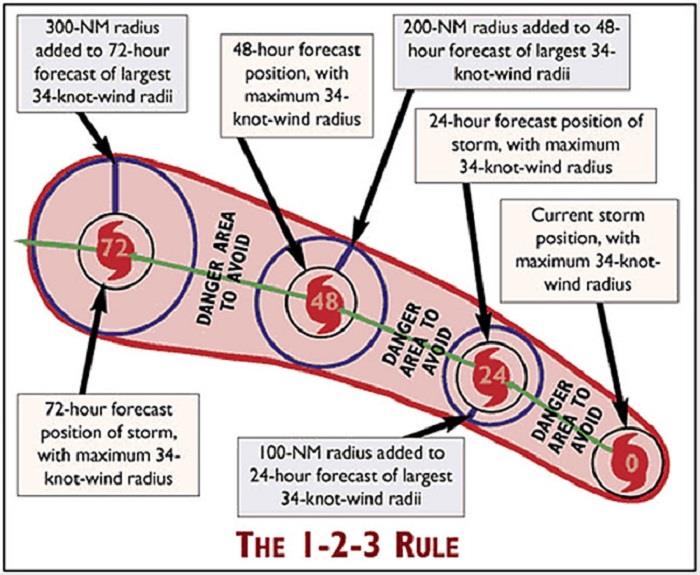
What is the "1-2-3 Rule" used for hurricane avoidance?
by National Weather Service 30 Aug 2019 10:50 UTC

Mariner's 1-2-3 Rule © Cruising Compass
The 1-2-3 Rule is means of avoiding winds associated with a tropical cyclone by taking into account the forecast track error of the National Weather Service over a 10 year period which is approximately 100 nm in 24 hours, 200 nm for 48 hours and 300 nm in 72 hours. The forecast track error is added to the 34 knot wind radii to compute the danger area. The wind radii may be found within Tropical Cyclone Forecast Advisory (TCM) forecasts.
For more detailed information on the 1-2-3 Rule, see the National Hurricane Center's Marine Safety Page.
The National Hurricane Center and Central Pacific Hurricane Center also prepare Atlantic, East Pacific and Central Pacific "Tropical Cyclone Danger Area" charts for broadcast via radiofax, depicting the danger area computed using the 1-2-3 Rule as a basis. The danger area will not be depicted for tropical cyclones that transition to extratropical status.